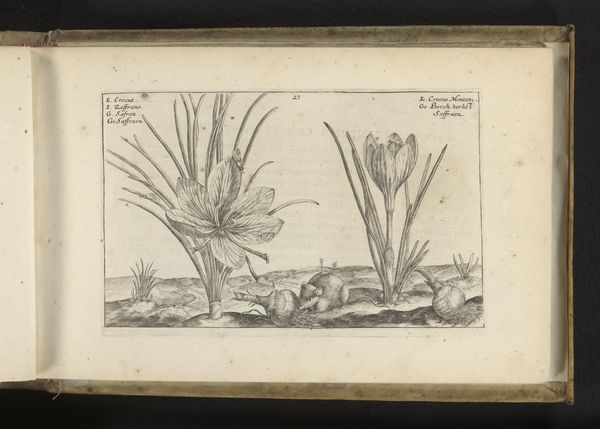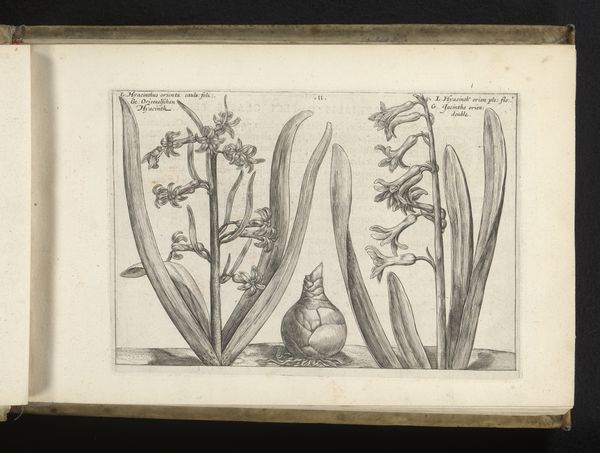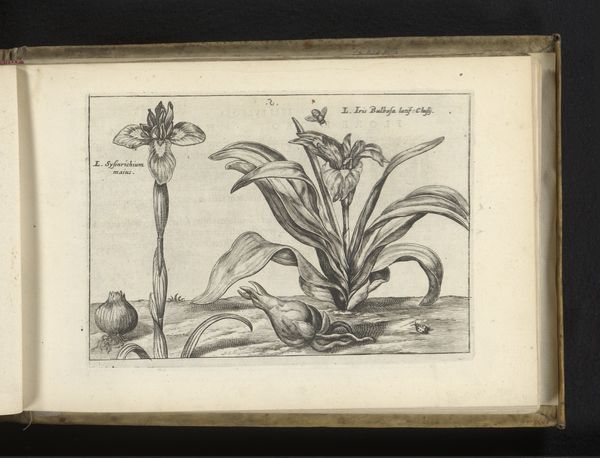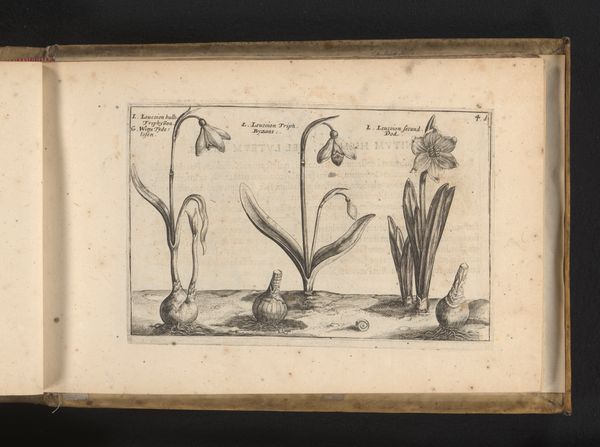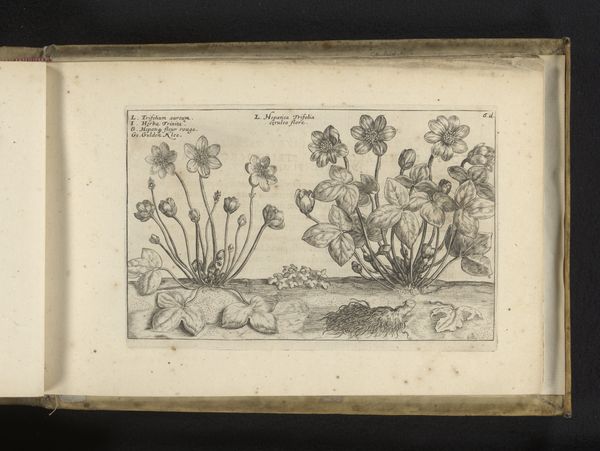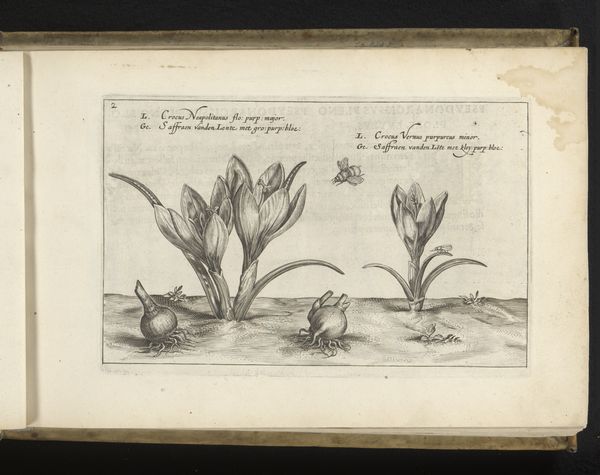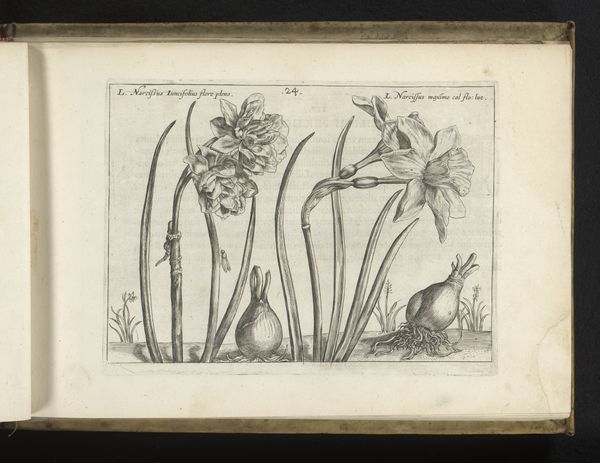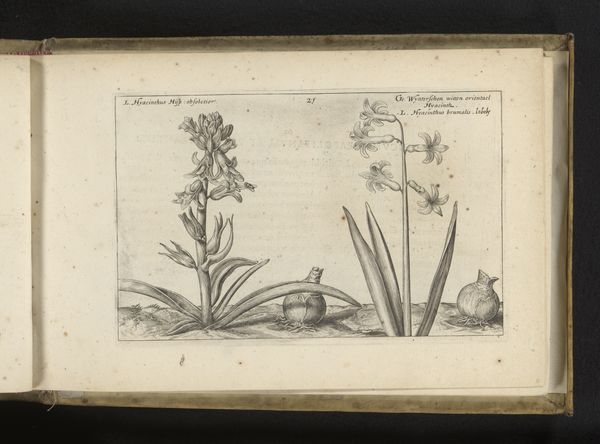
drawing, print, paper, ink, pen, engraving
#
drawing
#
aged paper
#
toned paper
# print
#
sketch book
#
flower
#
figuration
#
paper
#
personal sketchbook
#
ink
#
pen-ink sketch
#
pen and pencil
#
line
#
pen work
#
sketchbook drawing
#
pen
#
storyboard and sketchbook work
#
northern-renaissance
#
sketchbook art
#
engraving
Dimensions: height 143 mm, width 216 mm
Copyright: Rijks Museum: Open Domain
Curator: This is Crispijn van de Passe II's "Herfstnarcis (Sternbergia lutea)," an engraving from 1617 currently housed at the Rijksmuseum. Editor: Immediately, I'm struck by the level of detail he achieves with seemingly simple lines. The subtle textures on the bulb, the paper's aged tone…it feels almost like a study in monochrome, a meditation on form. Curator: Precisely. Notice how he contrasts the robust bulb, rendered with a network of lines suggesting its rough texture, with the delicate, almost ethereal quality of the flower itself. This could symbolize the duality of nature, the hidden potential within. Editor: It speaks volumes about the printmaking process of the era. Engraving on a metal plate demands precision and control, a real engagement with the materials themselves. It would have taken hours just to achieve that single stem. The craft, the labor behind such precise detail… it is mesmerizing! Curator: I'm intrigued by what seems to be multiple stages of life represented on the one page. We have a bloom, what looks like a bud, and then the bulb. Each holds unique symbolism related to growth, life cycles, and perhaps even resurrection. Editor: And each presented using clearly distinct applications of ink! Some of the botanical prints of the time are stunning in color; however, it’s striking how potent just a controlled hand working with paper and ink can be. There is almost nothing here but the line and its carefully controlled variance. Curator: Exactly! Van de Passe uses line not just to depict form, but also to convey meaning, layering a whole wealth of symbolic understanding onto the botanical study. Editor: Looking at the aging of the paper and its survival really drives home its precious quality as an artifact, as a testament to material culture over hundreds of years. The piece has become something that is both a natural observation as well as the artifact it lives on. Curator: I find that so moving too, and I keep wondering about Van de Passe’s reasons for depicting these Narcissus flowers specifically and what this composition meant to viewers at the time. Editor: The sheer craft and delicate mark making truly offer us such great insight and invite reflection on nature and its impact.
Comments
No comments
Be the first to comment and join the conversation on the ultimate creative platform.
